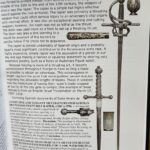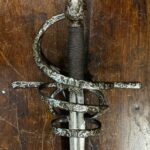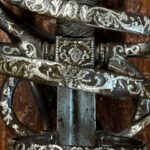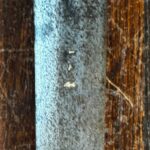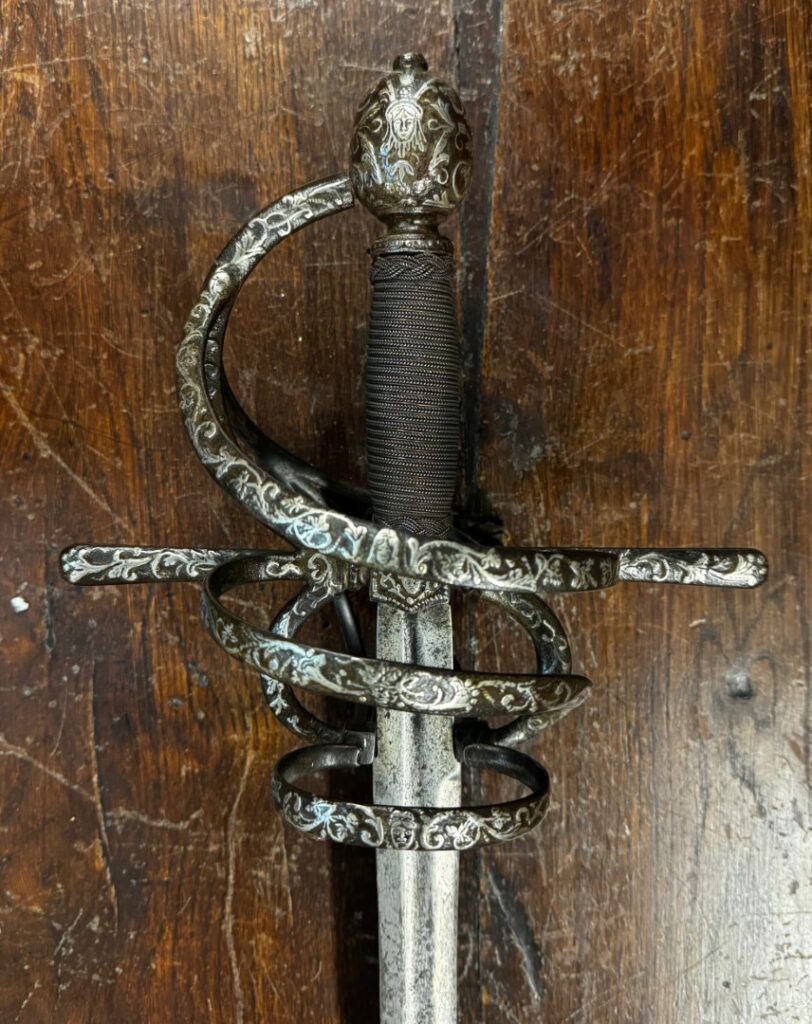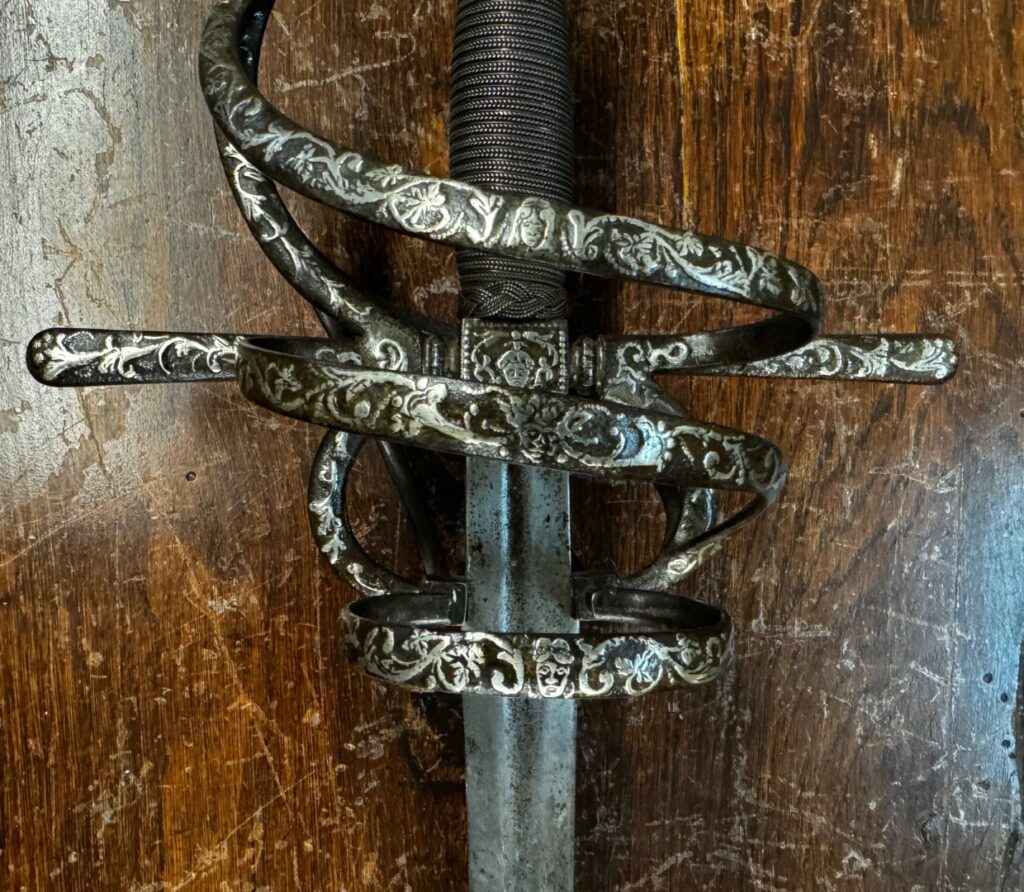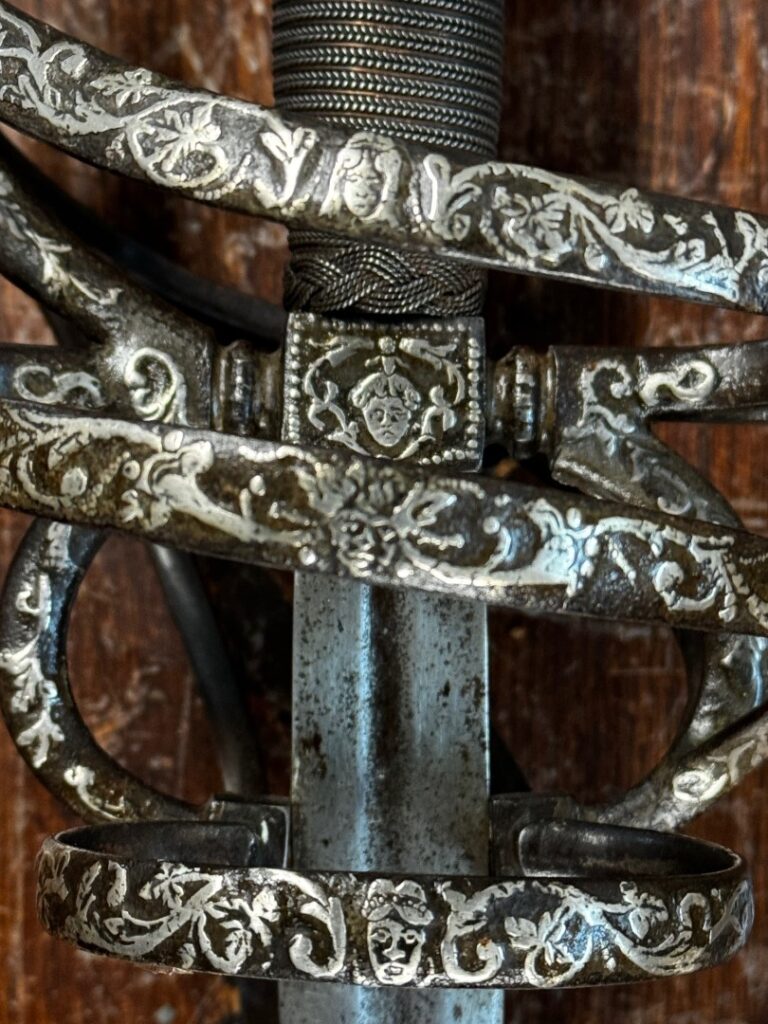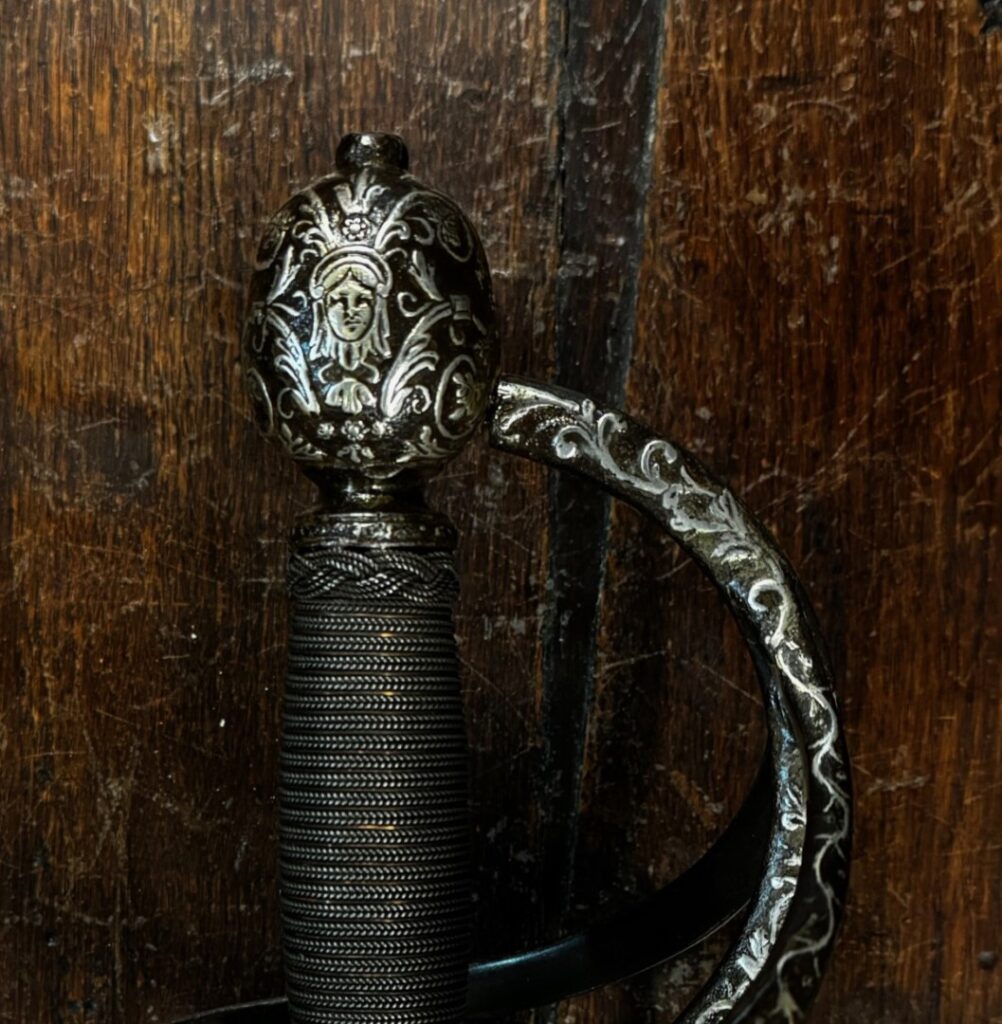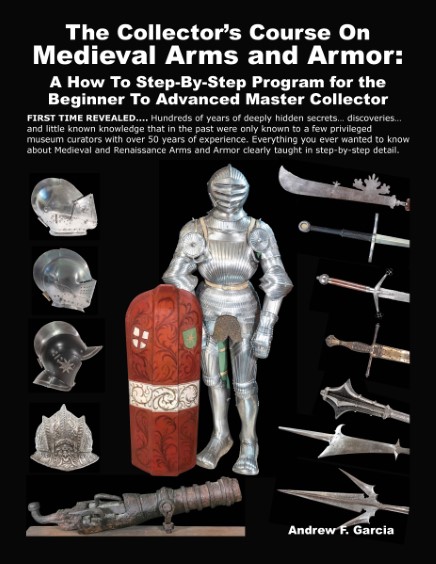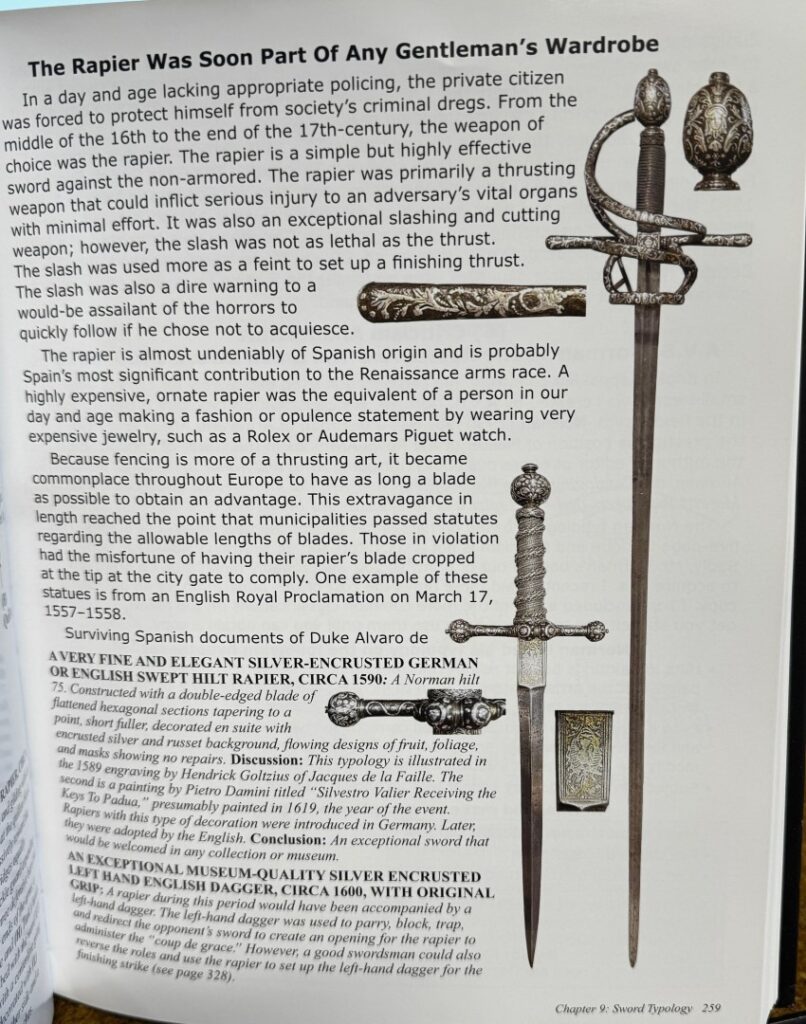Introduction: Working life from 1585 to 1620. Rapiers with this type of decoration were introduced in Germany. Later, they were adopted by the English.
Description: Under the Norman typology, this would be a Hilt 75 with a type 34 pommel, flat and slightly widening to the tip rectangular quillons, a short rectangular ricasso with a short fuller approximately a fourth the length of the blade, the remaining blade with a double-edged blade of flattened hexagonal sections tapering to a point, the hilt decorated en suite with encrusted silver on a russet background, flowing designs of fruit, foliage, and masks, showing no repairs. , Replaced grip but original wood core, Turk’s heads.
Approximate dimensions: Length 48 inches, blade length 41 inches, guard length 8.75 inches.
Comparable: This typology is illustrated in the 1589 engraving by Hendrick Goltzius of Jacques de la Faille. The second is a painting by Pietro Damini titled “Silvestro Valier Receiving the Keys To Padua,” presumably painted in 1619, the year of the event.
Comparables: A similar example can be found in:
–The Musee de l Armee in Paris (Cat no. J192).
–The Wallace Collection (Cat no. A606 and A565).
-The Earliest Illustration of This Sword Type Is in an equestrian portrait by Rubens circa 1610, almost certainly of Archduke Albrecht, currently housed at Windsor Castle #282.
Publication: The Collectors Course On Medieval Arms and Armor,2021, Garcia, page 259.
Provenance:
-Andrew Garcia
-From a very well-known private world-class collector and dealer who was thinning his collection at age 82.
-Joe Kindig Jr. (1898-1971)
Discussion: In a day and age lacking appropriate policing, the private citizen was forced to protect himself from society‚ criminal dregs. The weapon of choice was the rapier from the middle of the 16th to the end of the 17th century. The rapier is a simple but highly effective sword against the non-armored. The rapier was primarily a thrusting weapon that could inflict serious injury to an adversary‚ vital organs with minimal effort. It was also an exceptional slashing and cutting weapon; however, the slash was not as lethal as the thrust. The slash was used more as a feint to set up a finishing thrust. The slash was also a dire warning to a would-be assailant of the horrors to quickly follow if he chose not to acquiesce. The rapier is almost undeniably of Spanish origin and is probably Spain‚ most significant contribution to the Renaissance arms race. A highly expensive, ornate rapier was the equivalent of a person in our day and age making a fashion or opulence statement by wearing very expensive jewelry, such as a Rolex or Audemars Piguet watch. Because fencing is more of a thrusting art, it became commonplace throughout Europe to have as long a blade as possible to obtain an advantage. This extravagance in length reached the point that municipalities passed statutes regarding the allowable lengths of blades. Those in violation had the misfortune of having their rapier‚ blades cropped at the tip at the city gate to comply. One example of these statues is from an English Royal Proclamation on March 17, 1557. The French adopted the phrase ‚Äúespee rapiere‚Äù by 1475, which later was shortened to simply ‚Äúrapiere,‚Äù the English in 1505 spelled it ‚Äúrappyer.‚Äù The Giles Duwes English/ French dictionary of 1532/3 adopted the rapier’s definition as ‚ÄúSpannyshe sworde.‚Äù By 1550, the term rapier had been adopted to describe a slender, sharply pointed sword designed for thrusting, cutting, and slashing attacks. The rapier now consisted of a hilt protected by a handguard.
Conclusion: Even if you do not collect rapiers, it’s always good to have one in your collection because they were such an important part of Renaissance Europe. World-class rapiers like this one seldom make it to the collector’s market. This exceptional sword would be welcomed in any collection or museum. This is a rare opportunity. Act now so that you won’t be disappointed!!!*




